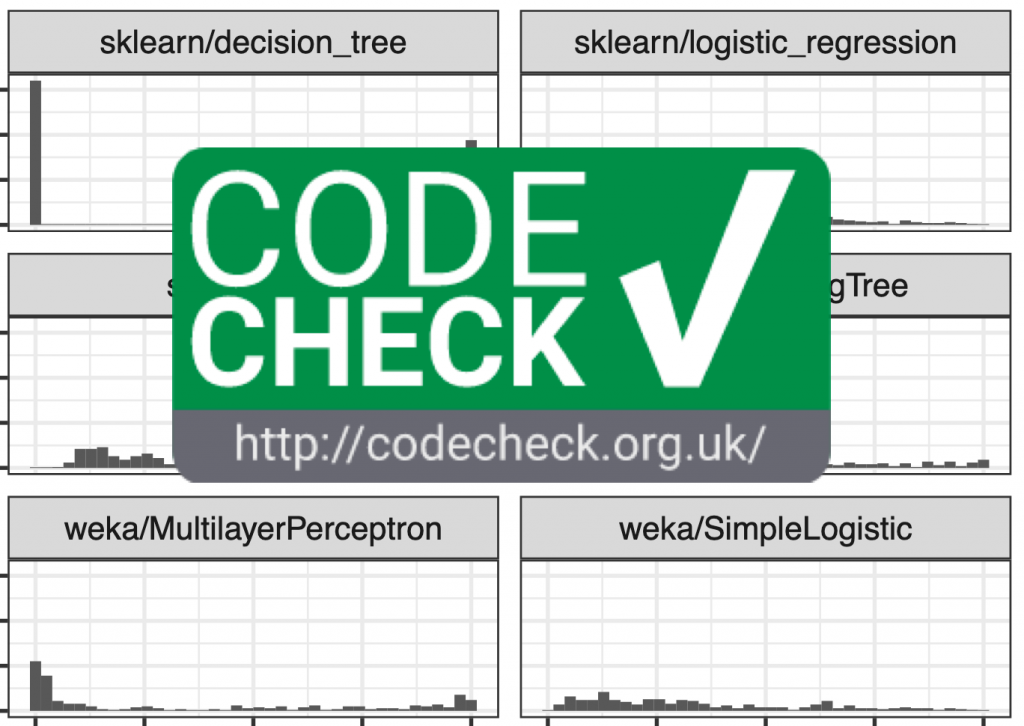Open Access Week 2021: GigaScience’s 10 Examples of Open

This week is International Open Access Week, and with the theme “It Matters How We Open Knowledge: Building Structural Equity”. This aims at highlighting the individual and collective action required alongside the decisions, actions, and investments in knowledge sharing to ensure that equity is foundational. Beyond just open licensing of content (of which is foundational in what we do) there are many other barriers that we’ve been trying hard to break to enable more equitable and open science for all. Since we’ve launched we worked hard to open science in many ways, from a technological perspective through many of the novel editorial practices and integrations we’ve implemented, to helping educate and amplify the voices of people working to open science. Be that through our efforts in community genomics and citizen science projects (see Bauhinia Genome) or publishing reviews, commentaries and guest blogs from open science practitioners.
This Open Access Week seems a good time to look back over these efforts, and here is a list of 10 of our favourite GigaScience papers providing examples of barriers we’ve tried to help break for more open science.
1. The inclusivity barrier
One rare positive of the COVID-19 pandemic has been the potential of increasing inclusivity of attendance at academic conferences. Yet, the mere existence of online conferences is no guarantee that everyone can attend and participate meaningfully. We recently published a collaboratively written Review from Open Science Special Interest Group of the OHBM identifying practices that purposefully encourage a diverse community to attend, participate in, and lead online conferences.
Levitis et al. Centering inclusivity in the design of online conferences—An OHBM–Open Science perspective, GigaScience, 2021, 10:8 doi:10.1093/gigascience/giab051
2. The lab barrier
You no longer need to be based in a wealthy research laboratory, or have any laboratory at all, to do cutting edge genomics research. Back in 2018 we published our first example of a study taking DNA sequencing and genomics to a completely new place: in situ genome sequencing in the jungle. See the DNA Day blog covering this #jungleomics.
Pomerantz A et al. Real-time DNA barcoding in a rainforest using nanopore sequencing: opportunities for rapid biodiversity assessments and local capacity building. Gigascience. 2018, 7:4. doi:10.1093/gigascience/giy033.
3. The participation barrier
In the data driven era, not only in research but in our day-to-day lives, people are creating more and more personal digitized data that enables human-participant research in social sciences and personalized medicine. In 2019 we published an open call from Open Humans for contributors to their community-based platform for participant led research from the social sciences to precision medicine (see the Q&A for more).
Greshake Tzovaras B, et al. Open Humans: A platform for participant-centered research and personal data exploration. GigaScience. 2019. doi:10.1093/gigascience/giz076
4. The transparency barrier
One of the most distinctive open science policies carried out by GigaScience since our launch is our open, named peer review and we have an editorial discussing the benefits of this policy.
Edmunds SC, Peering into peer-review at GigaScience, GigaScience, 2:1, 2013, doi:10.1186/2047-217X-2-1

5. The “Data not Available” barrier
Publishing sensitive medical data is no longer a barrier to transparent open peer review, our first example of precious Controlled Access medical data peer reviewed by named reviewers proving an example of how ‘data not available’ is no longer justifiable in many of these cases, at least from the perspective of journals that like ourselves have broken the “transparency barrier” (see above).
Gabriel AAG et al. A molecular map of lung neuroendocrine neoplasms. Gigascience. 2020 9:11. doi:10.1093/gigascience/giaa112.
6. The reproducibility barrier
GigaScience has always been trying to push the boundaries of how we disseminate reproducible research, and to adapt to the challenges of dealing with experiments become more data-intensive. In 2017 we published our first example showcasing the Code Ocean reproducible research platform that wraps and encapsulates the data, code, and computation environment in a “Compute Capsule” that can be interacted with through their platform for testing and then running via your cloud computing provider if it is of interest.
Luo R, Schatz MC, Salzberg SL. 16GT: a fast and sensitive variant caller using a 16-genotype probabilistic model. GigaScience 2017. doi:10.1093/gigascience/gix045
7. The collaboration barrier
Since our launch, on top of software papers we have seen more and more complex tools utilizing machine learning approaches. To help with reproducibility with machine learning-based tools, we recently published a paper integrating Gigantum, an open source web application that aims for better collaboration, sharing and making reproducible data science research even easier. Working these tools into the review and publication process potentially makes it easier to assess replicability and utility. With a slightly different and more distributed approach to Code Ocean, via a DOI users can run the published tool anywhere (laptop, GPU, on premises infrastructures, and Public Cloud) – eliminating problems that can arise when collaborating via multiple infrastructures and contexts are involved.
Vieira DV, et al, Driftage: a multi-agent system framework for concept drift detection, GigaScience, 10:6, 2021, doi:10.1093/gigascience/giab030.
8. The “certified reproducibility” barrier
While we’ve worked on methods to make the increasingly complicated computational research we publish easier to interact with and use, we’ve also look at ways of improving their peer-review. Last year we published the first published example demonstrating a new way of peer reviewing software articles: presenting a CODECHECK certificate. These independently time-stamped runs are awarded a “certificate of reproducible computation” and increase availability, discovery and reproducibility of crucial artifacts for computational sciences.
Piccolo SR. et al., ShinyLearner: A containerized benchmarking tool for machine-learning classification of tabular data, GigaScience, 9:40, 2020, doi:10.1093/gigascience/giaa026

9. The methodological comprehension barrier
Not just focusing on computation methods easier to scruitinise and reuse, in 2016 we published our first examples where complicated “wet lab” methods for extracting DNA from tiny parasites where broken down step-by-step and hosted in open access repository of scientific methods and collaborative protocol-centered platform protocols.io. Since then, with our team working with authors to input their methods we have gathered a large collection of protocols in our protocols.io workspace.
Mofiz E. et al., Genomic resources and draft reference assemblies of the human and porcine scabies mites, Sarcoptes scabiei var. hominis and var. suis. GigaScience. 5:23. 2016. doi:10.1186/s13742-016-0129-
10. The third dimension barrier
To ease access to our published three-dimensional datasets and models we have gone beyond just describing the data collection and findings by providing downloadable, interactive files of everything in these study. For interested citizen scientists out there, we’ve been doing things like providing new interactive web-based viewers, video clips and 3D printable file formats. In 2019 we published our first paper showcasing GigaScience’s complete integration with the Sketchfab 3D viewer, which enabling readers to interact with the 3D fossils in the paper and even view them via virtual reality headsets. Making our published research far more accessible and interesting to the general public.
Reid M, et al. A micro X-ray computed tomography dataset of fossil echinoderms in an ancient obrution bed: a robust method for taphonomic and palaeoecologic analyses. Gigascience. 2019 8:3. doi:10.1093/gigascience/giy156